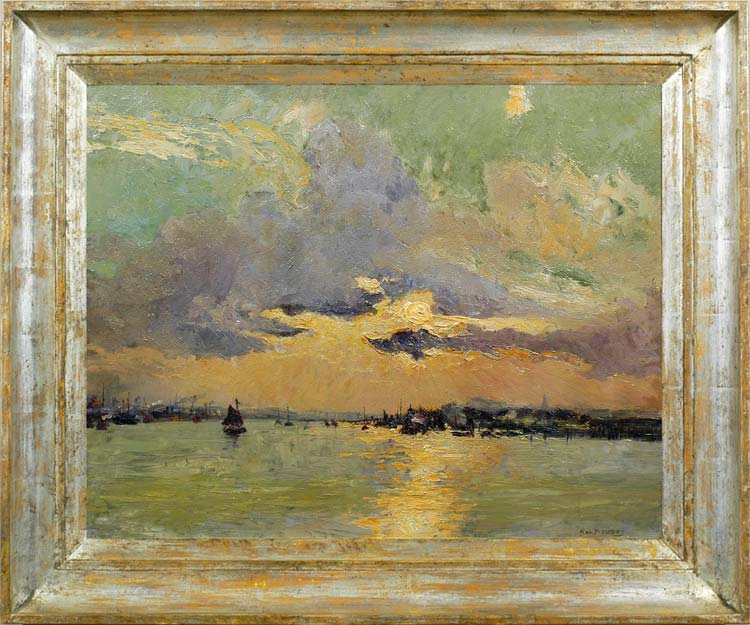A masterly and sophisticated coastal seascape, this painting of a sunset over a river mouth in Belgium manages to be at once impressionist and expressionist. Boudry captures the torn clouds and failing light at a precise moment, when the huge open skies of the Netherlands fade into a harmony of greens, greys, mauves and peach. He also summons a profound air of tranquillity, tinged with a melancholic sense of transience and loss, which may be rooted in the date when this was painted, the year in which the First World War ended. It is a work in the tradition of Boudry’s 17th century Netherlandish predecessors, such as Simon de Vlieger, Jan Porcellis and Willem van Diest: the same low horizon, the same quality of golden light, the same play of light and shade between the vast cloudy sky and the water; yet it manages to be simultaneously completely modern and fresh.
Biographical details
Robert L.P. Boudry (1878-1961) was born in Ypres, the son of Aloïs Boudry, a painter of genre scenes. His father had studied at the Academies of Ieper and Antwerp, won various medals in his career, and been honourably mentioned in the Paris Exposition Universelle of 1889; he was known in Belgium for his paintings of fishermen, but after fleeing the 1914 German invasion, he worked in Britain as a portraitist. Robert Boudry seems to have remained and worked mainly in and around Antwerp; like his father and his son, he went to the Antwerp Académie des Beaux-Arts, where he was taught by Eugène Joors and P.F. Verhaert. He produced still life and landscape paintings, and also very accomplished etchings. The landscapes are steeped in sunshine and manufactured of pure colour, so that although they are realistic views, portraying local agriculture and coastal industries, they also tend toward the expressionistic and symbolic and teeter on the brink of Fauvism. His son Paul Boudry (1913-76) became an artist: a painter of flowerpieces in the style of 17th century Flemish works, for the details of which he used brushes with a single hair.


